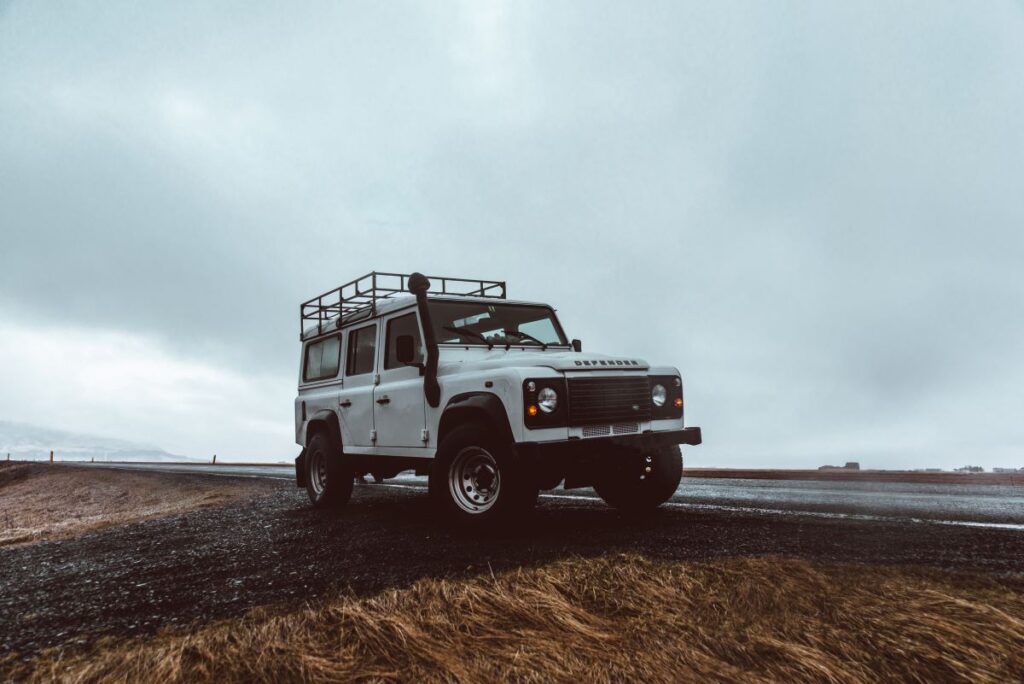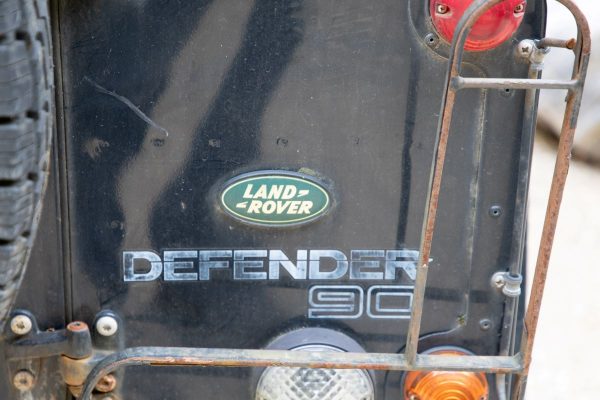10 tips every classic custom-built Land Rover Defender owner should know

If you’ve got a custom Land Rover Defender from the likes of Nene Overland, Twisted, Overfinch, Afterwatch, or any of the other talented professionals dedicated to building you a vehicle to your exact specifications, chances are you probably know a few tricks to keep your 4×4 happy. But do you know them all? Here we reveal 10 of the most vital tips you should know as a custom Defender owner.
1. Make sure you use a specialist insurance broker
Many don’t realise that, if you own a custom Land Rover Defender, you can get better protection by taking out a Land Rover insurance policy from a specialist insurance broker like us.
Your vehicle is one of a kind, so you might find that regular insurance doesn’t actually provide you with the right level of cover for all the bespoke parts and additional features you’ve chosen for your build.
At Adrian Flux, we are able to provide like-for-like cover on modifications, meaning that all the bells and whistles you’ve added to your customised Landy are covered too.
Plus, our policies can be tailored to your needs, making them extremely flexible. We offer a wide range of optional extras, including:
Agreed value cover
Owners club and forum discounts (more on that later)
Limited mileage discounts
Cover for off-roading
Protected no claims discount
Call us on 0800 369 8590 to get an insurance quote, or book a callback at a time that suits you.
2. Keep a close eye out for rust

If there’s one thing to look out for on a Defender, it’s rust. While your custom build will arrive looking all shiny and new, if you don’t take proper care, corrosion can build up and spread quite quickly, especially if you’re taking your Defender on off-road adventures or unpaved roads. After an outing, it’s integral that you remove any build up of mud to prevent rust from forming.
Rust is most common in the chassis, footwells, doors and firewall of the vehicle. Don’t be afraid to slide under the vehicle and inspect the underbody at regular intervals.
3. Be extra vigilant about corrosion in winter
Besides the build up of mud, one of the biggest culprits of corrosion is the use of road salt during icy periods in winter. If this is left to build up on your vehicle, it can cause serious damage. One of the easiest ways to remove road salt is to use warm water, which can be mixed in equal parts with vinegar, and apply this to your vehicle with a soft brush.
You can also help prevent the build-up of salt by waxing your Defender before the winter months.
4. Join a Land Rover Defender owner’s club or forum

There’s no better way to meet fellow Landies than by joining an owner’s club in the UK. Owner’s clubs provide you with access to events, allowing you to rub shoulders with other classic Land Rover owners and talk maintenance tips, restoration projects, and more.
There are also a number of different UK forums for Land Rover owners, allowing you to keep up to date with the latest news, exchange advice about your beloved 4x4s, and organise off-roading trips.
Joining an owner’s club or forum can also help reduce your insurance premiums with us as it tells us that you’re an enthusiast and more likely to treat your vehicle well.
5. Take layers of clothing with you
It’s no secret that many of the classic Defender models are draughty, so if the weather’s looking like it’s about to turn or the forecast is looking grim, it’s a good idea to pack a few extra layers. Be extra prepared when off-roading just in case you get stuck or end up staying longer than expected.
6. If you’re thinking about going off road, make sure your vehicle can handle it
Although Land Rovers by their very nature are designed to go off-road, the type of modifications you get could affect whether you want to journey across rugged terrain. Some custom builds, for instance, lean more heavily towards making your Defender a luxury vehicle for use on regular roads, while others will focus on enhancing the Landy’s natural off-roading abilities.
And that’s not to say that road-spec Land Rovers can’t still handle going off-road, but if you’ve opted to lower your suspension or you’ve chosen less grippy tyres, you might want to consult with the mechanics who performed your custom build to see how well equipped the vehicle is for your planned adventures.
7. Consider retro-fitting Adblue for diesel Defenders travelling in low emission zones (LEZ)
Although some older 110s will already be ULEZ and LEZ-exempt for being over 40 years old, you’ll need to pay the LEZ or ULEZ charge for the majority of classic Defender models – or you can make them compliant with emissions standards to avoid the charge. This means that diesel-fuelled Defenders will need to comply with Euro 6 standards.
An option for doing this is retro-fitting a new Selective Catalytic Reduction (SCR) system and Adblue. This combination helps improve the efficiency of the catalytic conversion while also reducing NOx emissions in line with standards. Some individuals who have gone through a conversion have also noted that the upgrade has reduced the noise level of their Defender.
There are many companies that carry out retro-fittings in the UK. This includes Cybrand (but only for models made after 2011), Nene Overland and Twisted Automotive. Note that Twisted use different techniques than the one outlined above and can also modify petrol models to make them compliant with Euro 4.
8. Take advantage of your custom professionals’ aftercare services
Most custom builders offer aftercare services to keep your vehicle in the best shape possible. For instance, Nene Overland provides vehicle servicing, MOTs, rustproofing, and more.
Although this can feel like an unnecessary expense, especially after you’ve forked out tens of thousands of pounds (or even hundreds of thousands of pounds) on your dream 4×4, there won’t be a mechanic who knows your vehicle better than the people who made it. They’ll also have access to replacement custom parts, meaning any changes are exactly as you requested when you first configured your build.
You’ll also find that most custom professionals are happy to talk with you about any issues you’re having with your vehicle, so they’re a brilliant point of contact and it’s well worth staying in touch with them.
9. Keep up with your maintenance schedule
Most owners will attest that Land Rovers need a lot of TLC, so make sure you’re keeping up with a maintenance schedule. Regular oil, filter and coolant checks are a must, and if you’re going off-roading you might want to check your gearbox and axle fluids regularly too.
It’s also a good idea to lubricate the grease points on the front and rear propeller shafts’ u-joint nipples and slider nipples regularly. This is particularly true after intensive off-roading trips as it helps prevent the components from running dry.
10. Fit a tracker and other security devices
Recent Range Rover thefts have been in the news, and although it seems like these are on the decline due to new technology fitted to models, it’s better to be safe, especially with a vehicle as precious as a fully customised build.
Garage Wire recently reported that there has been an increase in Land Rover Defender thefts, and some classic Defenders have even been stripped for parts, so it’s a good idea to fit trackers and other security devices on your 4×4.
Adding extra security to your vehicle could also help to reduce your insurance premium. We tend to recommend two devices used in conjunction with one another: the Tracker Retrieve Battery Powered and the Tracker Network Nano Assist. These products are made by the only tracking company that has a formal collaboration with all UK police forces.
Immobilisers, steering wheel locks, catalytic converter locks and other devices can all contribute to keeping your vehicle safe.
Get specialist Land Rover insurance from Adrian Flux
A vehicle as special as yours deserves a unique kind of insurance policy. As a specialist insurance broker, we’re able to tailor your Land Rover Defender insurance quote to your needs. Call us on 0800 369 8590 for a quote or book a callback at a time that suits you.






